Believed to be native to southern Mexico and Central America, papaya is a fruit cultivated in most tropical regions. Today, Hawaii is one of the principal growers of papaya in the U.S. Other countries that successfully cultivate papaya include the Philippines, India and Ceylon.
One way to check for papaya’s ripeness is by pressing your thumb into the flesh. In addition, red papaya is ripe when the skin green-yellow, and should have a bright orange-red flesh. Yellow papaya, on the other hand, is ripe when both the skin and the flesh turn yellow-orange. Recommended ways to eat papaya includes drinking its juice, which is sometimes added to other natural fruit juices because of its pleasing taste, but it’s also wonderful in salads, salsa, and of course, all by itself.
Each country that cultivates papaya has their own variety, developed from various breeding programs. The table below provides an oversight on the most popular selections:
| Australia
Improved Petersen Guinea Gold Sunnbank Richter/Arline |
Americas (Mexico)
Verde Gialla Cera Chincona |
Hawaii
Kapoho Solo Sunrise Waimanalo Rainbow |
| Florida
Cariflora Betty Homestead |
South Africa
Hortus Gold Honey Gold Kaapmuiden |
Venezuela
Paraguanera Roja |
| Barbados
Wakefield Graeme 5 and 7 |
Trinidad
Santa Cruz Giant Cedro |
India
Coorg Honey Dew Coimbitor 2 |
| Indonesia
Semangka Dampit |
Malaysia
Eksotika Sekaki |
Thailand
Sai-nampueng Khaek Dam |
| Cuba
Maradol |
Dominican Republic
Cartagena |
Taiwan
Tainung No. 5 |
| Philippines
Cavite/Sinta |
Health Benefits of Papaya
Vitamin C is one of the strong points of papaya, providing 144 percent of the daily recommended value per serving, which is great as an infection fighter as well as a free radical-scavenging antioxidant. This nutrient has various functions throughout your body. Various studies indicate that increased vitamin C consumption may help battle high blood pressure, reduce LDL (bad) cholesterol levels, significantly lower the risk of developing gout, improve iron absorption and boost the production of immune system cells.
Other vitamins include vitamin A, which may help protect your eyes from age-related decline, lower the risk of certain cancers and strengthen the skeletal system. Papaya provides folate, and good amounts of fiber and potassium, a cell and body fluid component that helps control heart rate and blood pressure.
The B vitamins in papayas such as folic acid, pyridoxine (vitamin B6), riboflavin, and thiamin (vitamin B1) are called “essential” because they’re required by your body, but not produced by your body, so they need an outside source to provide what is needed to metabolize – that’s why including foods like papaya in your diet is important.
Other studies have shown that papaya has antioxidant effects, which may help lower the damage of oxidative stress in the elderly and those affected with prediabetes, mild hypothyroidism and liver disease. In other studies, papaya has been found to help reduce inflammatory markers throughout your body.
Papayas contain 212 amino acids and several enzymes, including papain, a proteolytic enzyme that may help ease muscle soreness. Papain may also help relieve irritable bowel syndrome, constipation and heartburn.
However, it’s important that you consume papayas in moderation, as they contain fructose, which may be harmful to your health in excessive amounts.
Two genetically modified varieties of papaya were introduced to Hawaii in the 1990s, making papaya the first GM food to be introduced to the food supply in the U.S. For more information, read “Everything You HAVE TO KNOW about Dangerous Genetically Modified Foods.”
Papaya Nutrition FactsServing Size: 3.5 ounces (100 grams), raw |
||
| Amt. Per Serving |
% Daily Value* |
|
| Calories | 43 | |
| Total Fat | 0.26 g | |
| Saturated Fat | 0.081 g | |
| Trans Fat | ||
| Cholesterol | 0 mg | |
| Sodium | 8 mg | |
| Total Carbohydrates | 10.82 g | |
| Dietary Fiber | 1.7 g | |
| Sugar | 7.82 g | |
| Protein | 0.47 g | |
| Vitamin A47 µg | Vitamin C60.9 mg | |
| Calcium20 mg | Iron0.25 mg | |
Studies Done on Papaya
A fermented papaya preparation was found to have wound-healing properties in one analysis, which researchers concluded would be especially beneficial for diabetes patients. Another study involved the successful formulation of a dual-action cleanser/debrider with antibacterial properties from the papaya-derived enzyme papain, which researchers reported might be beneficial for wound management.
Another study indicated anticancer activity in papaya seeds and pulp, due to the presence of benzyl glucosinolate compounds. However, while the BG compounds in the seeds were shown to have similar strength at every stage of the ripening process, the pulp was found to contain more of this compound before maturation of the papaya, to the point that it nearly disappeared after the fruit was fully ripe. Tests confirmed higher concentration of cancer inhibition with higher presence of BG.
Papaya Fun Facts
Papayas were first referenced in 1526 by the Spanish chronicler Oviedo, after discovering this fruit on the Caribbean coasts of Panama and Colombia. Today, current worldwide output is estimated at 6 million tons, with India being the largest papaya producer at 3 million tons.
Summary
Sometimes thought of as an exotic fruit, papayas are native to tropical areas, including Hawaii, the only place they’re grown in the U.S. This sweet, succulent fruit contains 60.9 milligrams of vitamin C, known for its infection-fighting abilities, and vitamin A for healthy skin, mucous membranes, and vision. Other nutrients in papaya include folate, dietary fiber, potassium, essential B vitamins, and several flavonoids, including beta-carotene, shown to help protect against lung and mouth cancer.
One of the most important ingredients in papaya is the enzyme papain, shown to be effective against a number of stomach and intestinal problems, from expelling parasites to easing the symptoms of irritable bowel syndrome.

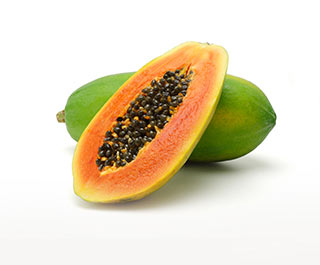
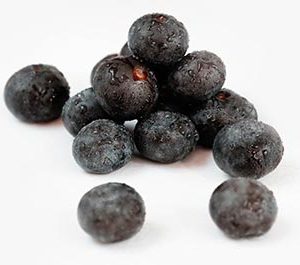
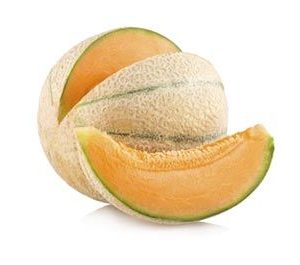
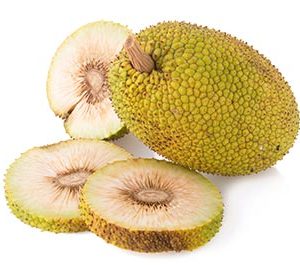
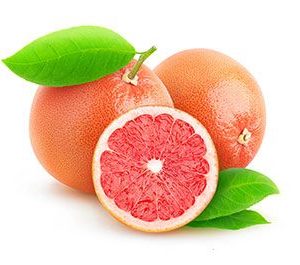

Reviews
There are no reviews yet.